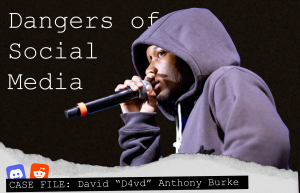Generally, small details in movies are generally insignificant to anyone who isn’t a movie buff. However, these minor elements form the major groundwork in director Jane Campion’s “The Power of the Dog.”
Set in 1920s Montana, the film follows Benedict Cumberbatch and Jesse Plemons as Phil and George Burbank, two ranch-sharing brothers whose lives take a turn when Phil greets George’s new wife Rose Gordon (Kirsten Dunst) and her son Peter (Kodi Smit-McPhee) with hostility.
The film contains beautiful imagery and cinematography, which I expect will get the most attention. The background visuals are what really stand out, as there are numerous vistas and natural elements that serve as backdrops or transitions. Such imagery includes one shot of blood hitting a stalk of wheat, or the shot towards the opening of hundreds of cattle grazing and migrating across a gloomy plain.
The score, composed by Jonny Greenwood, helped in illustrating the ever-growing tension and the arrival of certain characters, and it added to the overall mood of the film.
As the film with the leading number of Oscar nominations this year, with 12, including Best Picture and Director, this film sets a high overall impression. But in my own opinion, there are only a few of those nominations that I would give the award to.
The performances from Cumberbatch and Smit-McPhee are the main draws of the film, as the relationship of Phil and Peter is ultimately the focal point of the film.
Dunst’s performance is also well done, as the anxiety of her character is evident whenever Cumberbatch’s character Phil enters the room. Dunst’s role is secondary; and while it plays a hand in a few key plot moments, it doesn’t capitalize on the extent of her acting talents.
The film centers its conflict on its drama and themes, mainly those of opposition between mother and father figures, trauma and identity. I expected her performance to be much more impactful. Instead, Rose takes place in the background. She does factor into the themes by showing how helpless women were to the decisions being made by men at the time.
Another main criticism for the movie was the nearly hour-long set-up to get to what feels like the main crux of the conflict.
It spends too much time with Plemons’ character George without giving enough time for the ending to breathe a little more and generate a more concrete message. George is mainly present in the story to act as the bystander or straight man who witnesses what happens and picks up the pieces after the story has concluded.
The ending is another point of conflict for me. On one hand, it is a blessing that the film ends in a way that makes avenues for different interpretations. On the other hand, it leads to an unclear message that could have strengthened the narrative if clarified.
The interpretations that can be taken from the film overall also are not really too groundbreaking. Consequently, I would guess that Campion wanted to focus on conveying the film’s themes rather than conveying a different or deeper idea.
Overall, “The Power of the Dog” is a film that I would recommend to someone with a Netflix subscription who is more willing to look for a movie that requires some attention and appreciation for all elements of film, not for any particular one.




